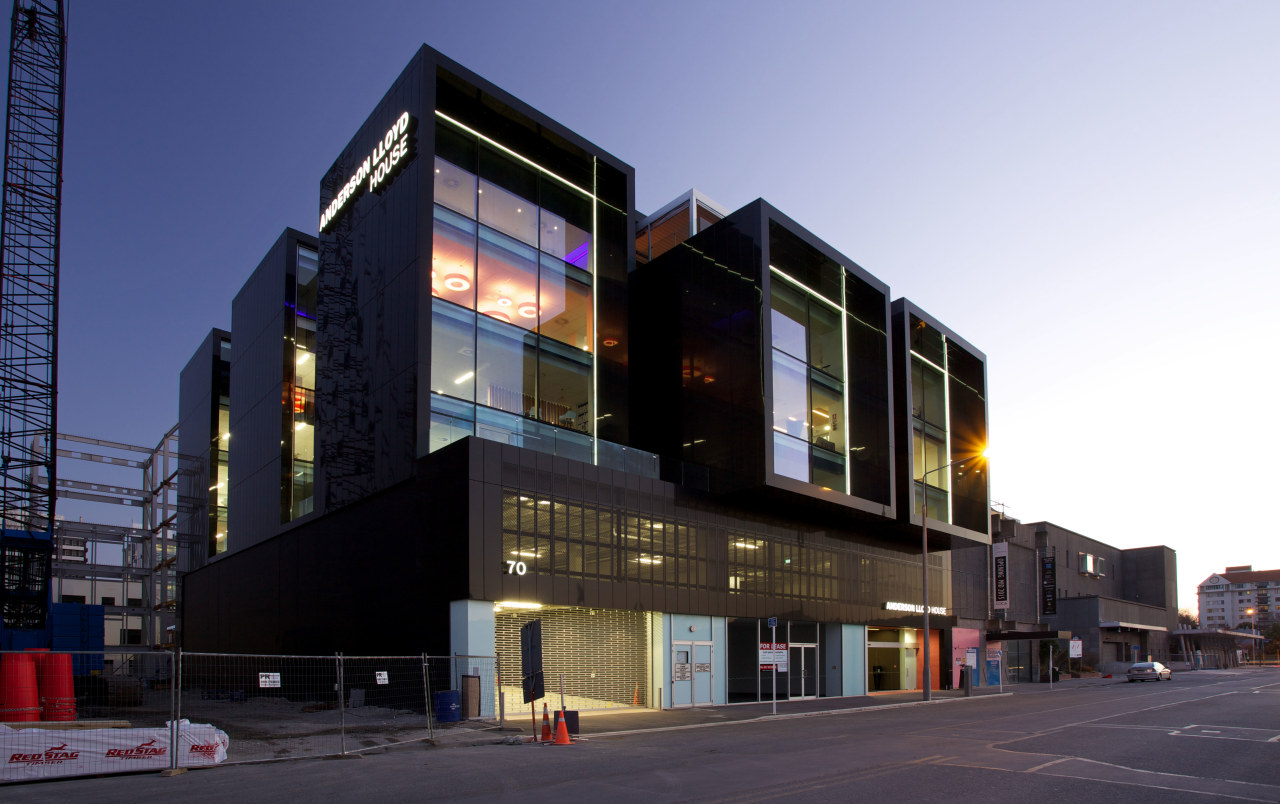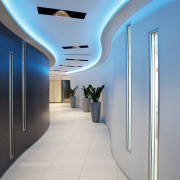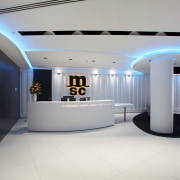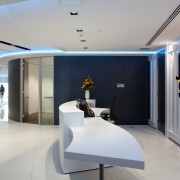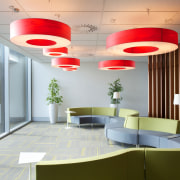New commercial building in Christchurch clad in Alpolic composite aluminium
Anderson Lloyd House post-earthquake contemporary new office building in Christchurch CBD features black Alpolic aluminium cladding, cubist form
Change is inevitable when a city CBD is rebuilt virtually from scratch. But it's the innovative architectural solutions that are turning heads in Christchurch as the first of the new buildings come on stream.
Anderson Lloyd House, owned by Amherst Properties, is one of the first of the new office buildings to arise in the CBD it replaces two buildings at 70 and 72 Gloucester Street that needed to be demolished following the 2011 earthquake.
Managing director Lindsay O'Donnell says the company required a significant building that would have a substantial point of difference from other architectural forms that have emerged post quake.
"We wanted a building that would convey a sense of extreme solidity," he says. "It also needed to maximise the site in terms of lettable areas, and it needed to be future-proofed against other new buildings that may arise on the adjoining sites. In that respect, this is more like a greenfields site it's a blank canvas for developers."
Architect Tim Ridd of FourFourSixSix, the international firm that provided the concept design, says the project provided a perfect opportunity to invigorate commercial architecture in the CBD.
"Prior to the earthquake there seems to have been a period of apathy in terms of design. There wasn't a lot happening and rents had softened and stagnated. We could see this project could be part of a core nucleus of exciting new buildings."
The design team chose to contrast stereotypical glazed curtain wall high-rise office buildings, with a more solid-looking structure.
"We felt the building needed to project a certain amount of gravitas and weight," says Ridd. "It needed to be solid, so it could relate to the scale of the civic buildings that remained. The nearby Centre of Contemporary Art building, with its Brutalist architecture, was also an inspiration. But while we wanted this building to have a similarly strong presence, it couldn't be too austere."
The subsequent architecture reflects these design influences. The project, which was documented, delivered and project managed by local firm Weirwalker Architecture, presents a solid, square-framed, Cubist-style building clad in Alpolic composite aluminium-plastic panels in Galaxy Black. The panels have a metallic finish and a clear coating that gives the building a reflective high-end finish and a crisp look.
"We broke the cladding into thinner profile panels to avoid the more standardised module sizes of composite panel systems of this type, thus maintaining the scheme's overall bespoke feel," says Ridd.

To reinforce the black form of the projecting framework, Weirwalker, in conjunction with Fourfoursixsix, proposed a cassette format with negative detailing. This allows the fixings to be concealed, so the strong forms, not the finer detail, are read this makes the box shapes pop a little more.
On one side, these box elements appear to stack one behind the other an effect created by 4.4m deep recesses in the upper levels, which form light wells. These light wells break up the overall massing of the building and future-proof the provision of light in the building, taking into account any future development on the adjacent site.
Michael Doig of Ganellen, the company that was contracted to undertake both the design management and construction of the building, says the recesses also perform a structural function, breaking up the eastern elevation.
"This enables the building to move more easily in the event of an earthquake," he says. "As the height of the building increases, there is a need for greater flexibility and ductility."
At the first-floor level, the composite aluminium cladding is perforated to ventilate the car parking facilities behind. The lighter look of the perforated cladding contrasts the substantial look of the box forms above.
But the solidity is not just about the way the building looks it's also about the way it has been built. Structural engineering firm Lewis Bradford designed the building to IL3 level, which is 130% of the National Building Standard.
"We purposely over-specified the required strengthening," says Lindsay O'Donnell. "It was a commercial decision that we feel will pay off and in fact Lewis Bradford is now a key tenant, along with legal firm Anderson Lloyd and the Mediterranean Shipping Company."
Michael Doig says all parties involved in the design and construction wanted to ensure the best structural outcome for the site.
"This is a highly efficient, highly engineered building with a concrete and steel-framed structure and a very robust CFA pile ground improvement system. This brings strength to the upper layer of soil that can be prone to liquefaction. The building foundations are not physically connected to the piles, which are shallow and numerous. These small piles are topped with a layer of compacted aggregate, and a concrete slab. The hard fill spreads the load over the entire site, so in the event of an earthquake there is no single point of weakness."
Similar attention to detail has gone into the office fit-outs, starting with the entry lobby.
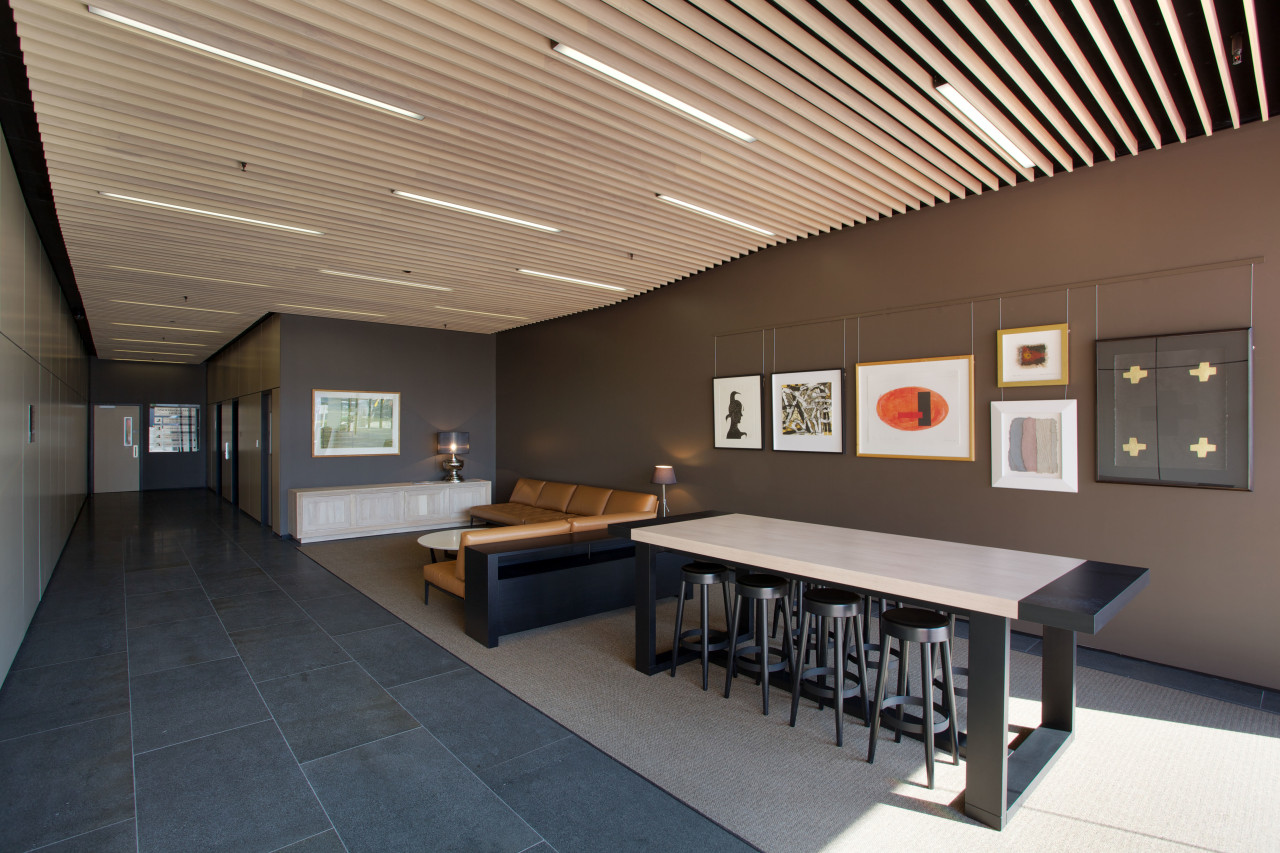
"Right from the outset we wanted to make this a specialist building, with the lobby an extension of the occupied areas," says O'Donnell. "We have equipped it with comfortable seating and a high table, so it functions as a neutral touch-down zone. People are more transient today they can sit down with a take-away coffee and a laptop, or meet visitors."
The lobby, designed by FourFourSixSix, features a suspended timber batten ceiling. This defines the circulation route, and also hides services.
Weirwalker Architecture designed the fit-out for the Mediterranean Shipping Company (MSC).
"The reception area features sinuous curved elements that reference ocean waves," says Weir. "We continued these down the passage, which helps to lead you through the space. Because the corridor has a curve you can't see what follows, so it generates an air of anticipation. LED strip lighting gives the corridor a visual lift. Textural wallpaper also enlivens the circulation area, and contrasts the smooth painted Gib board on the other side."
Other shipping references include folded aluminium panels behind the reception desk, which recall the form of a shipping container.
The office also reflects a focus on employees and staff retention. There is a cafe-style breakout area and a large outdoor terrace for staff. In the work areas, cedar screens help to provide a sense of enclosure and minimise distractions.
The joinery was built by MWF Manufacturing, a specialist in the design and manufacture of joinery for commercial and residential applications.
"MWF worked on the base building joinery and the MSC fit-out," says Michael Doig. "Much of this work was bespoke and the company went out of its way to ensure it was of an exceptionally high standard. The MSC fit-out provided a few challenges with the different curved elements, but the end result cannot be faulted. We have taken future clients through the floor to demonstrate what can be achieved. Everyone is proud of every aspect of this building, for good reason."
Credit list
Project
Concept architect
Main contractor
Fire consultant
Interior joinery
Security system
Internal signage
Fire equipment
Story by: Colleen Hawkes
Photography by: Jamie Cobel
Home kitchen bathroom commercial design
Diving into nature
Personality plus
Classic looks, contemporary efficiency
